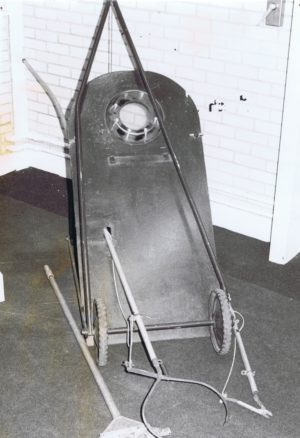In an earlier post I wrote about a peculiar technique allegedly recommended hundreds of years ago to detect buried explosives I have been on the hunt for more very early explosive devices and EOD techniques. I’m currently deep into a startling book published in 1590. Forgive me but I’m going to keep the name and author of the book to myself until I’ve finished working out what it says.
For now here’s an intriguing technique from the book for detecting subterranean tunnelling such as was used for mining the ramparts and walls of fortified castles. Tunneling is of course still used by all sorts of terrorists, and others. Apologies if I have mistranslated any of the description from quite archaic (for me) language. For ease of reading here’s my explanation of a couple of the words which may not be familiar to you, followed by the full description:
“lattine bason” = tin basin, or tin pan
“peason” = dried peas
“woll” = wool
As touching thus for to know whether there be any undermining in the ground, and where that they be, it is thus knowne: – Take a lattine bason, and goe unto the place that you doo suspect that underminers may bee, and set that bason uppon the ground, and then put five or sixe peason in that bason, and if that there bee any underminers neere at hand, then at everie stroke that they are in the ground doo make with their tooles, the pease will make a jarre in the bason; and also the effect will the more appeare, if that you doo binde a sackfull of woll as hard as you can, then setting the bason with pease uppon that, you shall heare every stroake that is made in the ground, and this is one of the best things that may be devised to be placed in any place, for to knowe where that underminers be.
I find the counter-intuitive idea of tightly bound wool to aid the “coupling” of the tin pan with the ground to be very interesting. If I had anything other than tinned peas in the house I’d do an experiment right now…
More to follow on other fascinating matters from this book in weeks to come.


